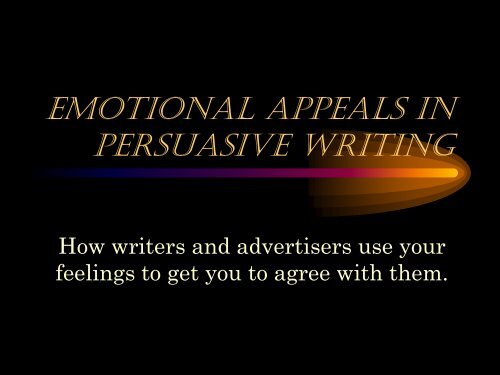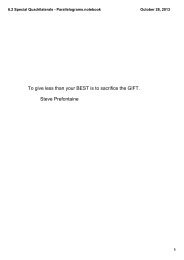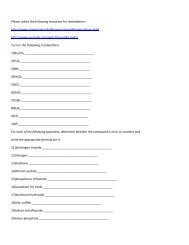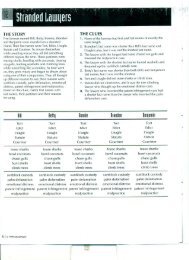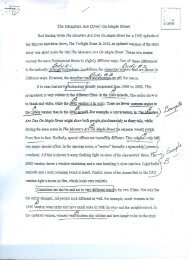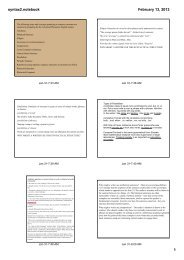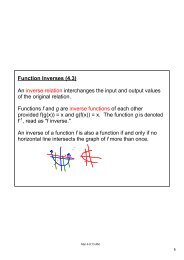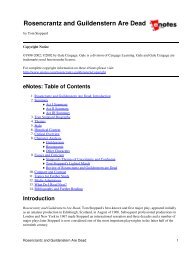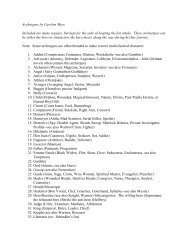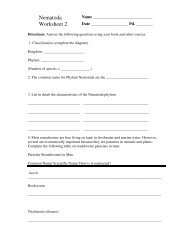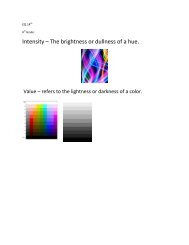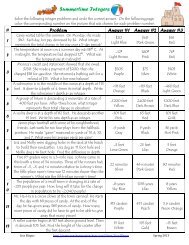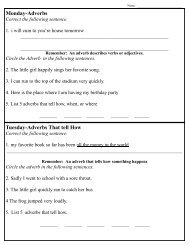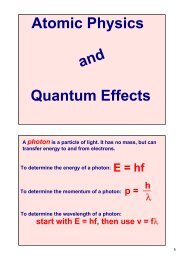Emotional Appeals in Persuasive Writing
Emotional Appeals in Persuasive Writing
Emotional Appeals in Persuasive Writing
Create successful ePaper yourself
Turn your PDF publications into a flip-book with our unique Google optimized e-Paper software.
<strong>Emotional</strong> <strong>Appeals</strong> <strong>in</strong><br />
<strong>Persuasive</strong> Writ<strong>in</strong>g<br />
How writers and advertisers use your<br />
feel<strong>in</strong>gs to get you to agree with them.
<strong>Emotional</strong> <strong>Appeals</strong> <strong>in</strong><br />
<strong>Persuasive</strong> Writ<strong>in</strong>g<br />
Writers and advertisers use<br />
many techniques to<br />
conv<strong>in</strong>ce you to agree<br />
with them or buy their<br />
product.<br />
An emotional appeal tries<br />
to make the reader<br />
connect the writer’s<br />
message with an<br />
important feel<strong>in</strong>g.
Types of<br />
<strong>Emotional</strong> <strong>Appeals</strong><br />
• Loaded Language<br />
• Basic Needs<br />
• Bandwagon<br />
• Testimonial<br />
• Snob Appeal<br />
• Pla<strong>in</strong> Folks Approach<br />
• Op<strong>in</strong>ions as Facts<br />
• Unsupported Generalities
Loaded Language<br />
The loaded language<br />
technique uses words<br />
that cause a strong<br />
feel<strong>in</strong>g.<br />
Once the reader is<br />
feel<strong>in</strong>g strongly, he or<br />
she may be more likely<br />
to agree with the writer.
Loaded Language<br />
• When a mother reads<br />
the word “groovy” <strong>in</strong><br />
this ad for a popular<br />
kids’ lunch box food,<br />
what emotion do you<br />
th<strong>in</strong>k she will feel?<br />
• What could this<br />
feel<strong>in</strong>g make her want<br />
to do?
The basic needs technique<br />
tries to connect your need for<br />
Love<br />
Safety and security<br />
Convenience<br />
Health<br />
Money<br />
to agreement with the writer’s<br />
op<strong>in</strong>ion.<br />
Basic Needs
Basic Needs<br />
• This example came from an ad for a low fat frozen<br />
d<strong>in</strong>ner. What basic need does it appeal to?
The bandwagon technique appeals to<br />
the reader’s need to belong and to do<br />
what everyone is do<strong>in</strong>g.<br />
Bandwagon<br />
Should you by a product<br />
just because it is the<br />
most popular?
The testimonial technique uses<br />
a famous person or someone<br />
who looks like a normal,<br />
average person.<br />
The testimonial tries to connect<br />
the writer’s op<strong>in</strong>ion to the<br />
reader’s feel<strong>in</strong>g about this<br />
person.<br />
Testimonial
Testimonial<br />
• This man seems like a<br />
normal, likeable guy.<br />
• The text is written as<br />
if he is talk<strong>in</strong>g directly<br />
to the reader.<br />
• The picture also uses<br />
another emotional<br />
appeal. Can you<br />
identify it?
Snob Appeal<br />
• Snob appeal is a technique that uses the reader’s<br />
desire to be better than others and connects this<br />
feel<strong>in</strong>g to the writer’s op<strong>in</strong>ion.<br />
• “Better” can mean more beautiful, more athletic,<br />
smarter, or richer than the average person.
• This model is Cybil<br />
Shepard, who is<br />
popular with older<br />
adults.<br />
• Advertisers use<br />
famous models to sell<br />
cloth<strong>in</strong>g because many<br />
people want to look as<br />
beautiful as the model.<br />
Snob Appeal
PLAIN FOLKS APPROACH<br />
• USING WORDS<br />
THAT APPEAL<br />
TO COMMON<br />
PEOPLE<br />
INSTEAD OF THE<br />
RICH OR<br />
PRIVILEGED.
• USING THE<br />
PERSONAL<br />
OPINION OF THE<br />
SPEAKER OR<br />
WRITER AS A<br />
FACT.<br />
OPINIONS AS FACTS<br />
• Example:<br />
• Vita Vitam<strong>in</strong>s is the<br />
best brand on the<br />
market.
UNSUPPORTED GENERALITIES<br />
• MAKING BOLD<br />
CLAIMS AND<br />
EMPTY<br />
PROMISES<br />
WITHOUT<br />
SUPPORTING<br />
THEM WITH<br />
FACTS.<br />
• For example:<br />
• We are the best at<br />
what we do!
Conclusion<br />
• <strong>Emotional</strong> appeal techniques can be<br />
extremely effective <strong>in</strong> persuad<strong>in</strong>g the reader<br />
to act on a feel<strong>in</strong>g.<br />
• As readers of persuasive writ<strong>in</strong>g, we must<br />
learn to recognize emotional appeals.<br />
• If we focus on the facts <strong>in</strong>stead of the<br />
feel<strong>in</strong>gs, we will make a better decision<br />
about the writer’s op<strong>in</strong>ion.


